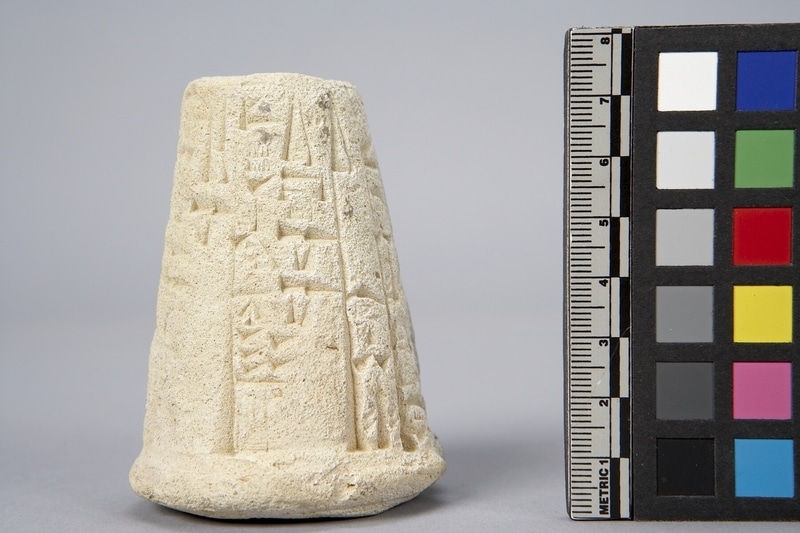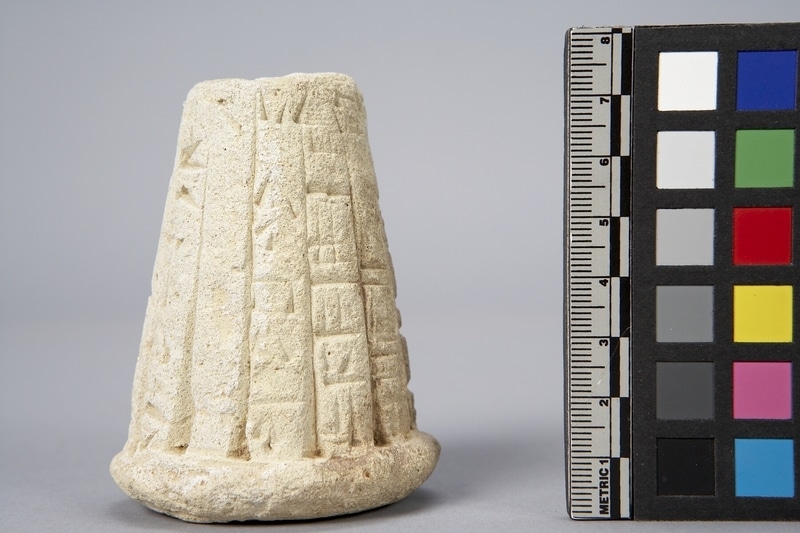Cuneiform Tablet Item Number: M4.24 from the MOA: University of British Columbia



Description
Clay cone tablet with a dome base and a broken top with cuneiform inscription. The sides of the body have worn, vertical linear inscriptions.
History Of Use
Cones were initially plain and put into temple walls for decoration. Cones with inscriptions were intended to be inserted into the corners of mud-brick walls of buildings to, e.g., commemorate who had the temple built, or record the construction (or reconstruction) of a major building. Gudea was a ruler (ensi) of the city of Lagash in Southern Mesopotamia who ruled c. 2144 - 2124 BCE.
Narrative
This tablet appears in an article, in Vol. 8 1990 Annual Review of the Royal Inscriptions of Mesopotamia “Cuneiform Texts at the University of British Columbia” (by C.A. Peters & D.R. Frayne, Toronto, p. 49-51).
Iconographic Meaning
The inscription records the rebuilding of a major temple in ancient Mesopotamia, by the ruler Gudea. Translation: "For the god Ningirsu, mighty hero, of the god Enlil-ra, Gudea, governor, of Lagash, made the appropriate order appear. The E-ninnu temple, his shining Anzu bird, he built [and], restored for him." Alternate translation: "For Ningirsu, Enlil's mighty warrior, Gudea, ruler of Lagash, made things function as they should [and] he built and restored for him Eninnu, the White Thunderbird." (Note: M4.19 and M4.24 have similar inscriptions.)
Item History
- Made in Girsu, Iraq during 2150
- Collected before 1934
- Owned by Charles L. Flick before February 6, 1934
- Received from Charles L. Flick (Donor) on February 6, 1934
What
Who
- Culture
- Sumerian
- Previous Owner
- Charles L. Flick
- Received from
- Charles L. Flick (Donor)
Where
- Holding Institution
- MOA: University of British Columbia
- Made in
- Girsu, Iraq
When
- Creation Date
- during 2150
- Collection Date
- before 1934
- Ownership Date
- before February 6, 1934
- Acquisition Date
- on February 6, 1934
Other
- Item Classes
- ceramics
- Condition
- good
- Current Location
- Case 108
- Accession Number
- 2293/0002